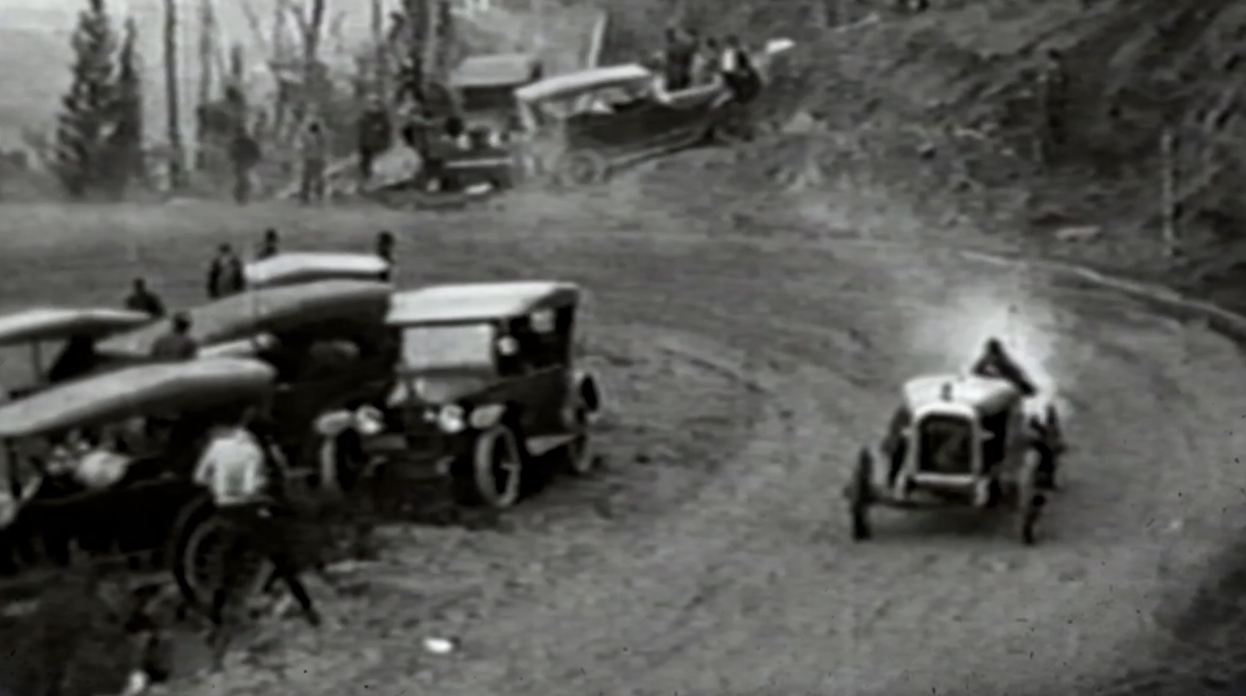Using Archival Photos and Video to Build the Opening of "Race to the Clouds"
Using Archival Photos and Video to Build the Opening of Race to the Clouds
Crafting the opening sequence for Race to the Clouds with Robb Holland required more than strong footage from Pikes Peak. To ground the story in the century-long history of the race, we incorporated archival photos and video throughout the first segment. These elements not only add context, but they also help set the emotional tone of the series. Working with archival material presents its own challenges, and the following principles shaped our approach during the edit.
1. Start With Purpose, Not Decoration
The Ken Burns–style photo move is familiar to most viewers. When used intentionally, it can draw an audience into a moment that would otherwise feel static. Before adding any keyframes or motion, we determined the narrative function of each archival clip. Some images were used to illustrate early race history. Others supported Robb’s commentary about the evolving danger of the mountain. The motion needed to support the meaning, not distract from it.
2. Use Keyframes With Controlled Scale and Zoom
The foundation of the Ken Burns effect is simple: begin with one scale value and end with another. But the difference between a polished move and an amateur one comes from restraint. We rarely changed scale by more than 5–8 percent per shot. This keeps the motion subtle enough to feel cinematic, while preventing resolution loss on older images. In some cases, we combined zoom with a slow pan to add direction without overcomplicating the move.
3. Avoid Repeating the Same Motion
Once you establish a signature motion, it can be tempting to reuse it. The problem is that audiences notice patterns quickly. To prevent the opening sequence from feeling repetitive, we varied the direction and type of movement—zooming in on one image, pulling back on the next, panning left, then holding still on the following clip. Even small variations keep the viewer engaged and help maintain a natural rhythm.
4. Match Animation Speed to the Tone of the Content
Most archival sequences benefit from slower moves. History needs room to breathe, and slower animation allows viewers to absorb detail. For RTTC, however, we also had a motorsports narrative to honor. While the overall pacing remained controlled, we introduced slightly faster motion on select images to reflect the energy of racing. These quicker moves appear sparingly, ensuring they feel purposeful rather than jarring.
5. Blend Archival and Modern Footage Seamlessly
The opening of Race to the Clouds transitions between historic images and modern high-speed footage from Robb’s race week. To make these shifts feel seamless, we matched color temperature, added subtle film grain to archival clips, and ensured the score supported both eras. When the tone aligns, the viewer experiences the history and the present day as part of one continuous story.
Final Thoughts
Archival material can elevate an edit when it is guided by intention. In the opening of RTTC, these choices help connect Robb’s pursuit of the ten-minute barrier to the legacy of the drivers who came before him. Thoughtful motion, disciplined keyframing, and pacing that reflects the spirit of the race all work together to create a strong foundation for the series.
If you’re building an edit that incorporates archival content, treat each image as a storytelling tool. When the motion is understated and the timing is calibrated to the tone of your project, even a still photograph can feel alive.



